| Package Data | |
|---|---|
| Maintainer Username: | hilioski |
| Maintainer Contact: | soc@erik.cat (Erik Campobadal) |
| Package Create Date: | 2016-10-26 |
| Package Last Update: | 2016-10-27 |
| Home Page: | |
| Language: | JavaScript |
| License: | MIT |
| Last Refreshed: | 2025-12-14 03:15:14 |
| Package Statistics | |
|---|---|
| Total Downloads: | 1,334 |
| Monthly Downloads: | 1 |
| Daily Downloads: | 0 |
| Total Stars: | 1 |
| Total Watchers: | 1 |
| Total Forks: | 0 |
| Total Open Issues: | 0 |

To install charts use composer
composer require hilioski/charts
Add the following service provider to the array in: config/app.php
ConsoleTVs\Charts\ChartsServiceProvider::class,
Add the following alias to the array in: config/app.php
'Charts' => ConsoleTVs\Charts\Charts::class,
php artisan vendor:publish --tag=charts_config
php artisan vendor:publish --tag=charts_assets --force
The file in: config/charts.php contains an array of settings, you can find the default settings in there.
Example Controller:
<?php
namespace App\Http\Controllers;
use Illuminate\Http\Request;
use App\Http\Requests;
use Charts;
class TestController extends Controller
{
public function index()
{
$chart = Charts::create('line', 'highcharts')
->setTitle('My nice chart')
->setLabels(['First', 'Second', 'Third'])
->setValues([5,10,20])
->setDimensions(1000,500)
->setResponsive(false);
return view('test', ['chart' => $chart]);
}
}
Example View:
<!DOCTYPE html>
<html lang="en">
<head>
<meta charset="utf-8">
<meta http-equiv="X-UA-Compatible" content="IE=edge">
<meta name="viewport" content="width=device-width, initial-scale=1">
<title>My Charts</title>
{!! Charts::assets() !!}
</head>
<body>
<center>
{!! $chart->render() !!}
</center>
</body>
</html>
| Create Charts | line | area | bar | pie | donut | geo | gauge | temp | percentage | progressbar | |---------------|------|------|-----|-----|-------|-----|-------|------|------------|-------------| | chartjs | x | x | x | x | x | - | - | - | - | - | | highcharts | x | x | x | x | x | x | - | - | - | - | | google | x | x | x | x | x | x | x | - | - | - | | material | x | - | x | - | - | - | - | - | - | - | | chartist | x | x | x | x | x | - | - | - | - | - | | fusioncharts | x | x | x | x | x | - | - | - | - | - | | morris | x | x | x | - | x | - | - | - | - | - | | plottablejs | x | x | x | x | x | - | - | - | - | - | | minimalist | x | x | x | x | x | - | - | - | - | - | | canvas-gauges | - | - | - | - | - | - | x | x | - | - | | justgage | - | - | - | - | - | - | x | - | x | - | | progressbarjs | - | - | - | - | - | - | - | - | x | x |
The first argument of the create method is the chart type, and the second is the library
Charts::create('line', 'highcharts')
->setTitle('My nice chart')
->setLabels(['First', 'Second', 'Third'])
->setValues([5,10,20])
->setDimensions(1000,500)
->setResponsive(false);
| Multi Dataset Charts | line | area | bar | pie | donut | geo | gauge | temp | percentage | progressbar | |----------------------|------|------|-----|-----|-------|-----|-------|------|------------|-------------| | chartjs | x | x | x | - | - | - | - | - | - | - | | highcharts | x | x | x | - | - | - | - | - | - | - | | google | x | x | x | - | - | - | - | - | - | - | | material | x | - | x | - | - | - | - | - | - | - | | chartist | x | x | x | - | - | - | - | - | - | - | | fusioncharts | x | x | x | - | - | - | - | - | - | - | | morris | x | x | x | - | - | - | - | - | - | - | | plottablejs | x | x | x | - | - | - | - | - | - | - | | minimalist | x | x | x | - | - | - | - | - | - | - | | canvas-gauges | - | - | - | - | - | - | - | - | - | - | | justgage | - | - | - | - | - | - | - | - | - | - | | progressbarjs | - | - | - | - | - | - | - | - | - | - |
To create multi-dataset charts simply add the values using the setDataset() function!
Charts::multi('line', 'highcharts')
->setColors(['#ff0000', '#00ff00', '#0000ff'])
->setLabels(['One', 'Two', 'Three'])
->setDataset('Test 1', [1,2,3])
->setDataset('Test 2', [0,6,0])
->setDataset('Test 3', [3,4,1]);
setDataset(required string $element_label, required array $values)
Charts::multi('bar', 'minimalist')
->setResponsive(false)
->setDimensions(0, 500)
->setColors(['#ff0000', '#00ff00', '#0000ff'])
->setLabels(['One', 'Two', 'Three'])
->setDataset('Test 1', [1,2,3])
->setDataset('Test 2', [0,6,0])
->setDataset('Test 3', [3,4,1]);
You can also generate database charts with simple setup!
$chart = Charts::database(User::all(), 'bar', 'highcharts');
Example data:

Note: You are required to use a specific group method before rendering the chart!
Important: To work with the GroupByYear, GroupByMonth, GroupByDay, lastByYear, lastByMonth & lastByDay you'll need the column created_at in the data rows.
The available methods are:
setData(required mixed $data)
Setup the data again.
chart = Charts::database(User::all(), 'bar', 'highcharts')->setData(Role::all());
``
setDateColumn(required string $column)
Set the column to group the data.
Default: created_at
chart = Charts::database(User::all(), 'bar', 'highcharts')->setDateColumn('my_date_column');
``
setDateFormat(required string $format)
Set the fancy date format for groupByDay() and lastByDay() function if $fancy set to true, must be called before those function.
Default: l dS M, Y
chart = Charts::database(User::all(), 'bar', 'highcharts')->setDateFormat('j F y');
``
setMonthFormat(required string $format)
Set the fancy date format for groupByMonth() and lastByMonth() function if $fancy set to true, must be called before those function.
Default: F, Y
chart = Charts::database(User::all(), 'bar', 'highcharts')->setDateFormat('F Y');
``
groupBy(required string $column)
Groups the data based on a column.
chart = Charts::database(User::all(), 'bar', 'highcharts')
->setElementLabel("Total")
->setDimensions(1000, 500)
->setResponsive(false)
->groupBy('game');
``
[Example GroupBy](https://i.gyazo.com/30183fa75f6bee6848898c4dbe487491.png)
groupByYear(optional int $years)
Groups the data based in years.
Default: $years = 4
chart = Charts::database(User::all(), 'bar', 'highcharts')
->setElementLabel("Total")
->setDimensions(1000, 500)
->setResponsive(false)
->groupByYear();
/ to display a number of years behind, pass a int parameter. For example to display the last 10 years:
chart = Charts::database(User::all(), 'bar', 'highcharts')
->setElementLabel("Total")
->setDimensions(1000, 500)
->setResponsive(false)
->groupByYear(10);
``
[Example GroupByYear](https://i.gyazo.com/5d992b6ce858fee8ed455c61e3bec546.png)
groupByMonth(optional string $year, optional boolean $fancy)
Groups the data in months (if no year set, the current one will be used).
Default: $year = 7, $fancy = false
chart = Charts::database(User::all(), 'bar', 'highcharts')
->setElementLabel("Total")
->setDimensions(1000, 500)
->setResponsive(false)
->groupByMonth();
/ to display a specific year, pass the parameter. For example to display the months of 2016 and display a fancy output label:
chart = Charts::database(User::all(), 'bar', 'highcharts')
->setElementLabel("Total")
->setDimensions(1000, 500)
->setResponsive(false)
->groupByMonth('2016', true);
``
[Example GroupByYear](https://i.gyazo.com/8d93b2f74857047339317d54b5082868.png)
groupByDay(optional string $month, optional string $year, optional boolean $fancy)
Groups the data in days (if no year/month set, the current one will be used).
Default: $month = date('m'), $year = date('Y'), $fancy = false
chart = Charts::database(User::all(), 'bar', 'highcharts')
->setElementLabel("Total")
->setDimensions(1000, 500)
->setResponsive(false)
->groupByDay();
/ to display a specific month and/or year, pass the parameters. For example to display the days of september 2016 and display a fancy output label:
chart = Charts::database(User::all(), 'bar', 'highcharts')
->setElementLabel("Total")
->setDimensions(1000, 500)
->setResponsive(false)
->groupByDay('09', '2016', true);
``
[Example GroupByYear](https://i.gyazo.com/b461f29f41a0a5ac046f1cea79083dcc.png)
lastByYear(optional int $number)
Alias for groupByYear() method. Does the same.
Default: $number = 4
chart = Charts::database(User::all(), 'bar', 'highcharts')
->setElementLabel("Total")
->setDimensions(1000, 500)
->setResponsive(false)
->lastByYear();
/ to display a number of years behind, pass a int parameter. For example to display the last 3 years:
chart = Charts::database(User::all(), 'bar', 'highcharts')
->setElementLabel("Total")
->setDimensions(1000, 500)
->setResponsive(false)
->lastByYear(3);
``
[Example LastByYear](https://i.gyazo.com/7f85bec0fb49f5729608aa87b8657fc1.png)
lastByMonth(optional int $number, optional boolean $fancy)
Display the numbers of months behind (relative to the current date).
Default: $number = 6, $fancy = false
chart = Charts::database(User::all(), 'bar', 'highcharts')
->setElementLabel("Total")
->setDimensions(1000, 500)
->setResponsive(false)
->lastByMonth();
/ to display a number of months behind, pass a int parameter. For example to display the last 6 months and use a fancy output:
chart = Charts::database(User::all(), 'bar', 'highcharts')
->setElementLabel("Total")
->setDimensions(1000, 500)
->setResponsive(false)
->lastByMonth(6, true);
``
[Example LastByMonth](https://i.gyazo.com/7c7df6503749fda8d96807d6bc2861aa.png)
lastByDay(optional int $number, optional boolean $fancy)
Display the numbers of days behind (relative to the current date).
Default: $number = 7, $fancy = false
chart = Charts::database(User::all(), 'bar', 'highcharts')
->setElementLabel("Total")
->setDimensions(1000, 500)
->setResponsive(false)
->lastByDay();
/ to display a number of days behind, pass a int parameter. For example to display the last 14 days and use a fancy output:
chart = Charts::database(User::all(), 'bar', 'highcharts')
->setElementLabel("Total")
->setDimensions(1000, 500)
->setResponsive(false)
->lastByDay(14, true);
``
[Example LastByDay](https://i.gyazo.com/eeac8c7551ed681ef3728454ba4be9f0.png)
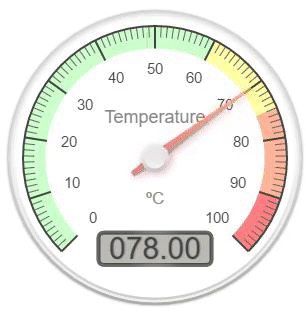
| Realtime Charts | line | area | bar | pie | donut | geo | gauge | temp | percentage | progressbar | |-----------------|------|------|-----|-----|-------|-----|-------|------|------------|-------------| | chartjs | - | - | - | - | - | - | - | - | - | - | | highcharts | x | x | x | - | - | - | - | - | - | - | | google | - | - | - | - | - | - | x | - | - | - | | material | - | - | - | - | - | - | - | - | - | - | | chartist | - | - | - | - | - | - | - | - | - | - | | fusioncharts | - | - | - | - | - | - | - | - | - | - | | morris | - | - | - | - | - | - | - | - | - | - | | plottablejs | - | - | - | - | - | - | - | - | - | - | | minimalist | - | - | - | - | - | - | - | - | - | - | | canvas-gauges | - | - | - | - | - | - | x | x | - | - | | justgage | - | - | - | - | - | - | x | - | x | - | | progressbarjs | - | - | - | - | - | - | - | - | x | x |
You can create realtime charts.
Example json:
{"value":31}
'value' can be changed to diferent index name with setValueName($string)
$chart = Charts::realtime(url('/path/to/json'), 2000, 'gauge', 'google')
->setValues([65, 0, 100])
->setLabels(['First', 'Second', 'Third'])
->setResponsive(false)
->setHeight(300)
->setWidth(0)
->setTitle("Permissions Chart")
->setValueName('value'); //This determines the json index for the value
Note: The interval is set in ms
The available methods are:
setValueName(required string $string)
Sets the value json index.
Default: value
$chart = Charts::realtime(url('/path/to/json'), 2000, 'gauge', 'google')
->setValues([65, 0, 100])
->setLabels(['First', 'Second', 'Third'])
->setResponsive(false)
->setHeight(300)
->setWidth(0)
->setTitle("Permissions Chart")
->setValueName('value'); //This determines the json index for the value
setUrl(required string $url)
Sets the url after chart object creation.
$chart = Charts::realtime(url('/path/to/json'), 2000, 'gauge', 'google')
->setValues([65, 0, 100])
->setLabels(['First', 'Second', 'Third'])
->setResponsive(false)
->setHeight(300)
->setWidth(0)
->setTitle("Permissions Chart")
->setUrl(url('/new/json'));
setInterval(required int $interval)
Sets the interval after chart object creation (ms).
$chart = Charts::realtime(url('/path/to/json'), 2000, 'gauge', 'google')
->setValues([65, 0, 100])
->setLabels(['First', 'Second', 'Third'])
->setResponsive(false)
->setHeight(300)
->setWidth(0)
->setTitle("Permissions Chart")
->setInterval(3000); // in ms
setMaxValues(required int $number)
Sets the max ammount of values to be seen before removing the first one.
$chart = Charts::realtime(url('/path/to/json'), 1000, 'area', 'highcharts')
->setResponsive(false)
->setHeight(300)
->setWidth(0)
->setTitle("Permissions Chart")
->setMaxValues(10);
You can create math function charts.

Charts::math('sin(x)', [0, 10], 0.2, 'line', 'highcharts');
The function is sin(x), the interval is [0, 10] and the x amplitude is 0.2
setFunction(required string $function)
Sets the function.
Charts::math('sin(x)', [0, 10], 0.2, 'line', 'highcharts')->setFunction('x+1');
setInterval(required array $interval)
Sets the function / chart interval.
harts::math('sin(x)', [0, 10], 0.2, 'line', 'highcharts')->setInterval([2, 8]);
``
setAmplitude(required int $amplitude)
Sets the function amplitude between x points.
harts::math('sin(x)', [0, 10], 0.2, 'line', 'highcharts')->setAmplitude(0.5);
``
calculate()
Calculates the valeus / labels for the chart.
Note: This function is called every time a modification is made in the chart function, interval or amplitude so you don't need to call it every time you change the values. It's just an auxiliary function.
harts::math('sin(x)', [0, 10], 0.2, 'line', 'highcharts')->calculate();
``
create(optional string $type, optional string $library)
Returns a new chart instance, if no library is specified, the default one will be used.
Charts::create('line');
Charts::create('line', 'highcharts');
database(required mixed $object, optional string $type, optional string $library)
Returns a new database chart instance that extends the base one.
Charts::database(User::all());
Charts::create(User::all(), 'line', 'highcharts');
realtime(required string $url, required int $interval, optional string $type, optional string $library)
Returns a new database chart instance that extends the base one.
Charts::realtime(url('/json/data'), 2000, 'gauge', 'google')
realtime(required string $function, required array $interval, required int $amplitude, optional string $type, optional string $library)
Returns a new math function chart instance that extends the base one.
Charts::math('sin(x)', [0, 10], 0.2, 'line', 'highcharts');
assets(optional array $libraries)
Returns all the assets to generate the graphs.
To output only certain libraries, add an array to it with the libraries you want
?php echo Charts::assets(); ?>
/ Using blade
!! Charts::assets() !!}
/ Only certain libraries
!! Charts::assets(['google', 'chartjs']) !!}
``
libraries(optional string $type)
Returns an array of all the libraries available (can be filtered).
// Return all the libraries available
print_r(Charts::libraries());
// Return all the libraries available for the line chart
print_r(Charts::libraries('line'));
types(optional string $library)
Returns an array of all the chart types available (can be filtered).
// Return all the chart types available
print_r(Charts::types());
// Return all the chart types available for the highcharts library
print_r(Charts::libraries('highcharts'));
setGaugeStyle(required string $style)
Set the gauge style
Default: left
Available options: left right center
harts::create('gauge', 'google')->setGaugeStyle('right');
``
setType(required string $type)
Set the chart type after creation (Example: from line to pie).
Charts::create('line', 'highcharts')->setType('pie');
setLibrary(required string $library)
Set the chart library after creation (Example: from highcharts to google).
Charts::create('line', 'highcharts')->setLibrary('google');
setLabels(required array $labels)
The labels of the chart.
Charts::create('line', 'highcharts')->setLabels(['First', 'Second', 'Third']);
setValues(required array $values)
The values of the chart respectively.
Charts::create('line', 'highcharts')->setValues([10, 50, 100]);
setElementLabel(required string $element_label)
The element label for line / bar / geo charts.
Charts::create('line', 'highcharts')->setElementLabel('Total Views');
setTitle(required string $title)
The chart title.
Charts::create('line', 'highcharts')->setTitle('My Chart');
setColors(required array $colors)
The colors of the charts respectively.
Charts::create('line', 'highcharts')->setColors(['#ff0000', '#00ff00', '#0000ff']);
setWidth(required int $width)
The chart width if non-responsive. 0 = responsive width.
Charts::create('line', 'highcharts')->setWidth(1000);
setHeight(required int $height)
The chart height if non-responsive. 0 = responsive height.
Charts::create('line', 'highcharts')->setHeight(500);
setDimensions(required int $width, required int $height)
The chart dimensions (shortcut to set width, height with one funcion).
Charts::create('line', 'highcharts')->setHeight(1000, 500);
setResponsive(required boolean $responsive)
Set if the chart is responsive or not. If not, the chart dimensions will be used.
Charts::create('line', 'highcharts')->setResponsive(false);
settings()
Return the chart settings.
print_r(Charts::create('line', 'highcharts')->settings());
render()
Render the chat.
echo Charts::create('line', 'highcharts')->setLabels(['One', 'Two'])->setValues([10, 20])->render();
Note: highcharts can't change the color of this chart. Well it can but it's complicated, so I leave it here.
Charts::create('pie', 'highcharts')
->setTitle('My nice chart')
->setLabels(['First', 'Second', 'Third'])
->setValues([5,10,20])
->setDimensions(1000,500)
->setResponsive(false);
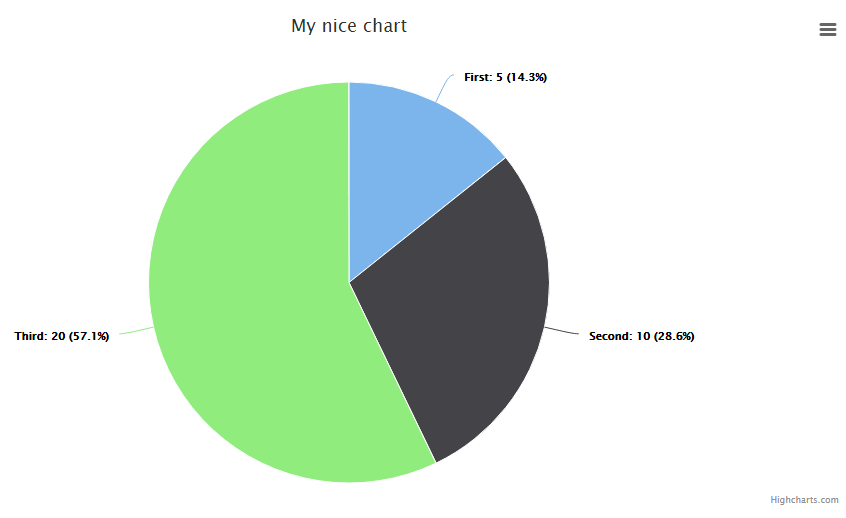
Note: highcharts and chartist can't change the color of this chart. Well they can but it's complicated, so I leave it here.
Charts::create('donut', 'highcharts')
->setTitle('My nice chart')
->setLabels(['First', 'Second', 'Third'])
->setValues([5,10,20])
->setDimensions(1000,500)
->setResponsive(false);

Charts::create('line', 'highcharts')
->setTitle('My nice chart')
->setElementLabel('My nice label')
->setLabels(['First', 'Second', 'Third'])
->setValues([5,10,20])
->setDimensions(1000,500)
->setResponsive(false);
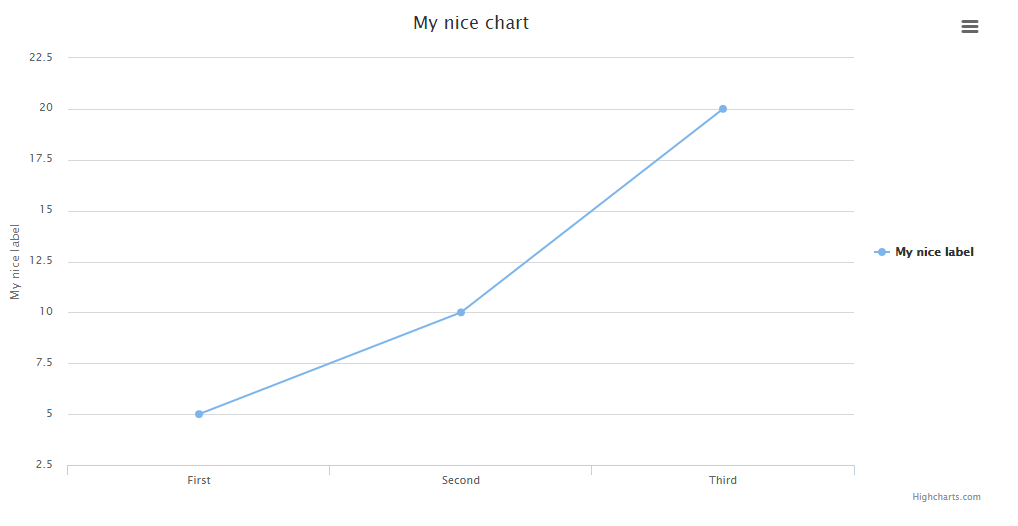
Charts::create('area', 'highcharts')
->setTitle('My nice chart')
->setElementLabel('My nice label')
->setLabels(['First', 'Second', 'Third'])
->setValues([5,10,20])
->setDimensions(1000,500)
->setResponsive(false);
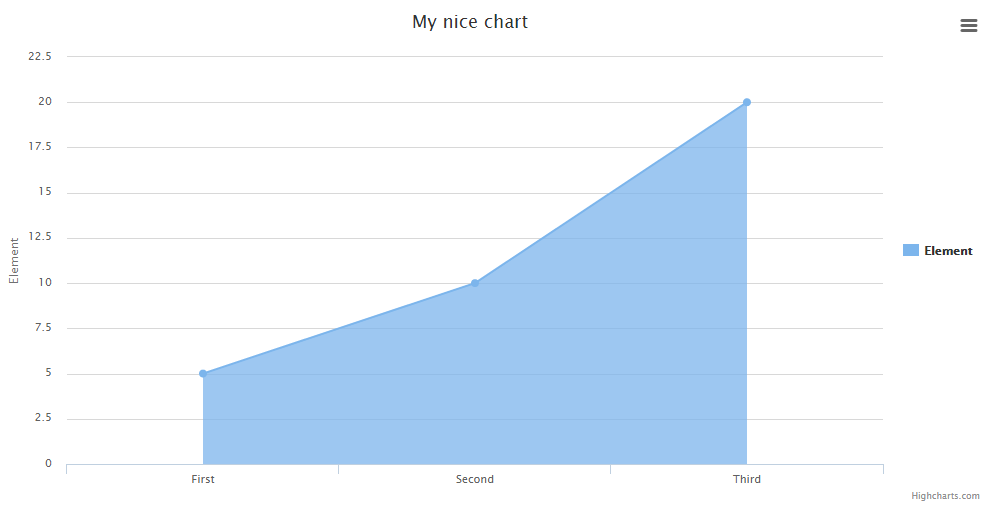
Note: highcharts can't change the color of this chart. Well it can but it's complicated, so I leave it here.
Charts::create('bar', 'highcharts')
->setTitle('My nice chart')
->setElementLabel('My nice label')
->setLabels(['First', 'Second', 'Third'])
->setValues([5,10,20])
->setDimensions(1000,500)
->setResponsive(false);
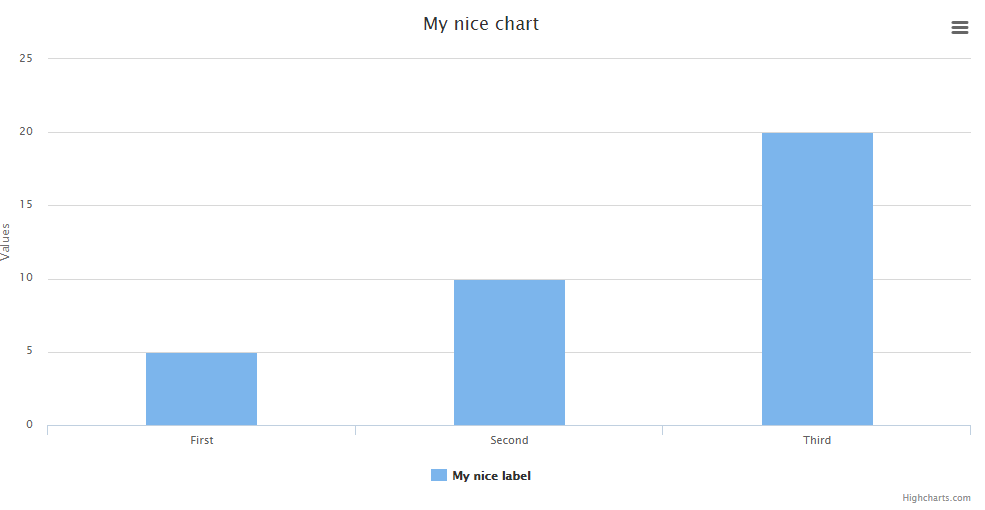
Note: colorbar not include element label legend.
Charts::create('colorbar', 'highcharts')
->setTitle('My nice colorful chart')
->setColors(['#e04f67', '#7cb5ec'])
->setLabels(['First', 'Second'])
->setValues([5,10])
->setDimensions(200,200)
->setResponsive(false);

Note: The labels must have the country codes, not the name.
Note 2: To add color to the chart, you'll need to provide an array of at least 2 colors. The first is the min and the second the max.
Charts::create('geo', 'highcharts')
->setTitle('My nice chart')
->setElementLabel('My nice label')
->setLabels(['ES', 'FR', 'RU'])
->setColors(['#C5CAE9', '#283593'])
->setValues([5,10,20])
->setDimensions(1000,500)
->setResponsive(false);
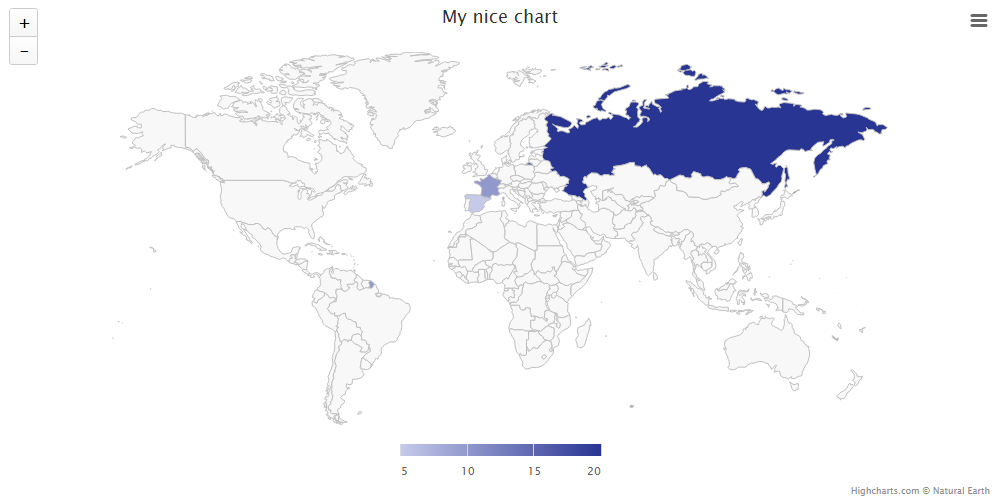
Note: You either need 1 value or 3 following this standar: [actualValue, minValue, maxValue]
Charts::create('gauge', 'canvas-gauges')
->setTitle('My nice chart')
->setElementLabel('My nice label')
->setValues([65,0,100])
->setResponsive(false)
->setHeight(300)
->setWidth(0);

Note: You either need 1 value or 3 following this standar: [actualValue, minValue, maxValue]
Charts::create('temp', 'canvas-gauges')
->setTitle('My nice chart')
->setElementLabel('My nice label')
->setValues([65,0,100])
->setResponsive(false)
->setHeight(300)
->setWidth(0);
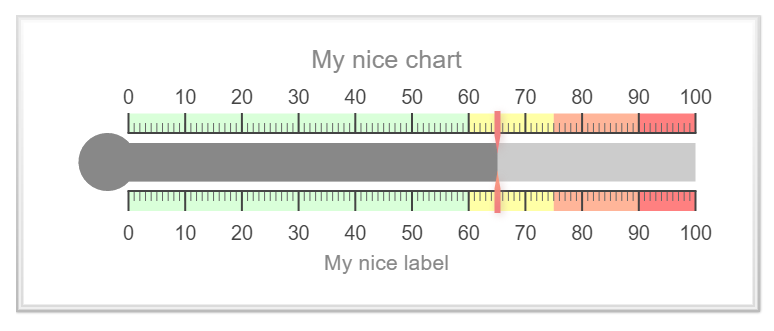
Note: You either need 1 value or 3 following this standar: [actualValue, minValue, maxValue]
Charts::create('percentage', 'justgage')
->setTitle('My nice chart')
->setElementLabel('My nice label')
->setValues([65,0,100])
->setResponsive(false)
->setHeight(300)
->setWidth(0);
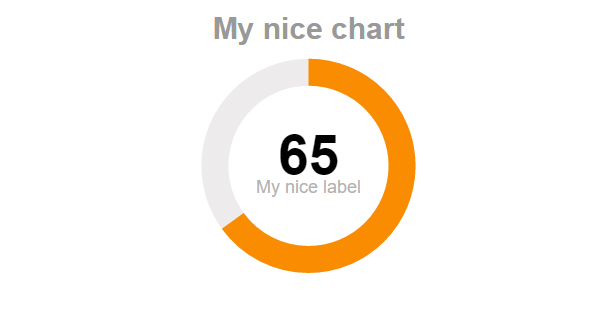
Note: You either need 1 value or 3 following this standar: [actualValue, minValue, maxValue]
Charts::create('progressbar', 'progressbarjs')
->setValues([65,0,100])
->setResponsive(false)
->setHeight(50)
->setWidth(0);

You can create your own Charts by forking this repository. The src/Templates folder contains all the current charts, but you can
add yours like this:
Create a new file, the syntax is: library.type.php
if your chart library is called: mylib
and your template is for the line chart: line
Then you create a file like this: mylib.line.php
To call it later, just use:
$chart = Charts::create('line', 'mylib');
You will need to add the CSS / JS to the includes.php file found in the /src folder.
You have plenty of examples to see how to put the data so just take a closer look at all the included templates before doing yours!